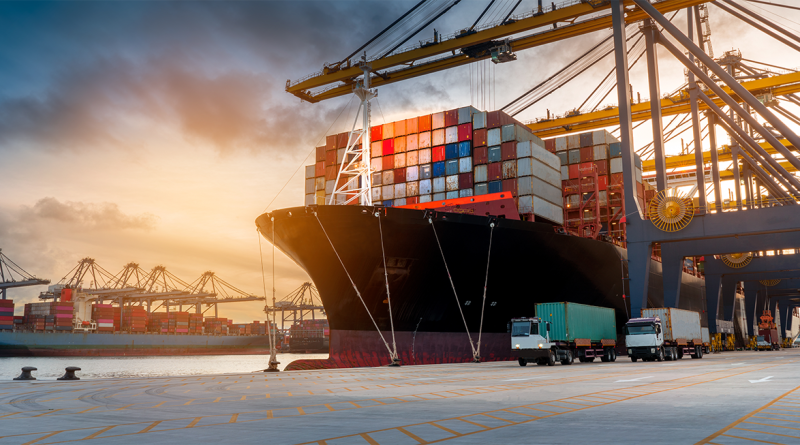Maritime Leaders Say Trump’s China Fees Risk US Port Disruption
Subscribe to our free newsletter today to keep up-to-date with the latest transportation and logistics news.
A proposal from former President Donald Trump to impose a 200 percent fee on Chinese ships entering US ports has triggered sharp criticism from maritime executives and logistics professionals. Framed as a move to reduce US dependence on foreign supply chains and curb Chinese influence in global trade, the policy is drawing concern not only from the shipping industry but also from broader sectors that depend on cost-efficient international logistics.
The announcement arrives amid an increasingly protectionist political environment, where tariffs and trade restrictions are being repurposed as tools of national strategy. While Trump’s proposal is being hailed by some domestic manufacturing advocates, maritime executives warn it could cripple the flow of goods through critical US gateways such as Los Angeles, Long Beach, and Savannah. These ports are already under pressure from global shipping realignments, labor negotiations, and increasing infrastructure demands.
US ports rely overwhelmingly on foreign-flagged ships to handle containerized cargo. Chinese vessels play an especially outsized role in trans-Pacific trade, where Asian exports support key sectors of the US economy including retail, electronics, automotive, and agriculture. A surcharge of this magnitude threatens to disrupt this logistics balance at a time when global supply chains have only recently recovered from the chaos of the COVID-19 pandemic and the 2018–2019 trade war.
Industry groups, such as the World Shipping Council and the National Retail Federation, argue that the proposed policy misunderstands the realities of maritime commerce. Unlike manufactured goods, container ship traffic is not easily rerouted or replaced.
Trump’s proposed port fees reignite protectionist tensions
The measure echoes similar tariff-heavy tactics used during his first term, including Section 301 duties on hundreds of billions of dollars worth of Chinese imports. Those policies sparked a multi-year trade war that disrupted supply chains, increased costs for American businesses, and led to retaliatory tariffs from Beijing.
Critics point out that the current proposal is even more sweeping than its predecessors. Unlike product-specific duties, a fee imposed at the port level on all Chinese vessels could affect virtually every category of imported goods that rely on maritime transport.
Why US ports and shipping companies are pushing back hard
Executives from major shipping lines and port authorities are voicing strong opposition to Trump’s proposed fees, warning that the move could backfire on US companies more than on their Chinese counterparts. Most of the infrastructure and logistics that drive American imports rely on foreign-flagged ships, many owned or operated by Chinese firms or partners. The policy, they argue, penalizes the system that keeps global trade flowing efficiently into the US.
Maritime leaders note there is no immediate substitute for these foreign vessels. The US Merchant Marine fleet is a fraction of its former size and focused largely on military and government-contracted transport. In commercial shipping, the US lacks the shipbuilding capacity, operational scale, and investment incentives needed to replace foreign tonnage.
Port operators in Long Beach, Houston, and New Jersey have warned that increased port fees would lead to reduced traffic, longer turnaround times, and job losses across a range of industries including longshore work, customs, warehousing, and drayage. Lower cargo volumes would also undermine investment in modernization and environmental upgrades, which are often tied to throughput-based funding models.
Logistics firms argue that cost increases from tariffs will be passed down the supply chain, impacting importers and retailers long before affecting Chinese carriers. The average American consumer may not notice changes at the port, but the effect is likely to show up in store prices and delivery timelines. For businesses operating on thin margins, even small increases in shipping costs can create pressure on inventory management and pricing.
Industry coalitions warn that the US may also risk undermining its relationships with key trading partners. At a time when international coordination is critical to address issues like port congestion, emissions standards, and digital infrastructure, unilateral tariffs could isolate the US from collaborative solutions, especially in the Indo-Pacific where China’s influence continues to grow.
The proposal to impose high fees on Chinese vessels is entering an already complex maritime environment. Supply chains are still recovering, regulatory standards are shifting, and trade routes are being shaped by geopolitical pressure. Adding a disruptive tariff policy could destabilize an industry that thrives on stability and scale.
China’s footprint in global shipping is significant. Seven of the 10 busiest ports in the world are located in China, and the country maintains strategic stakes in port infrastructure around the world. Major Chinese shipping firms are embedded in global alliances that control much of the world’s container volume.
Many in the shipping sector are calling for a more comprehensive approach. That includes investing in domestic shipping infrastructure, creating incentives for US-flagged carriers, and strengthening international alliances to reduce dependence on any single country. Tariffs alone, they argue, are not a solution to the structural challenges facing American logistics.
Sources:
